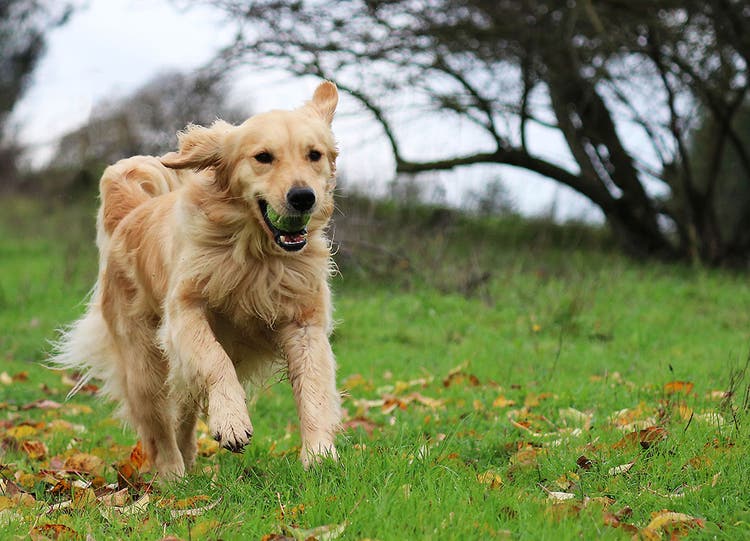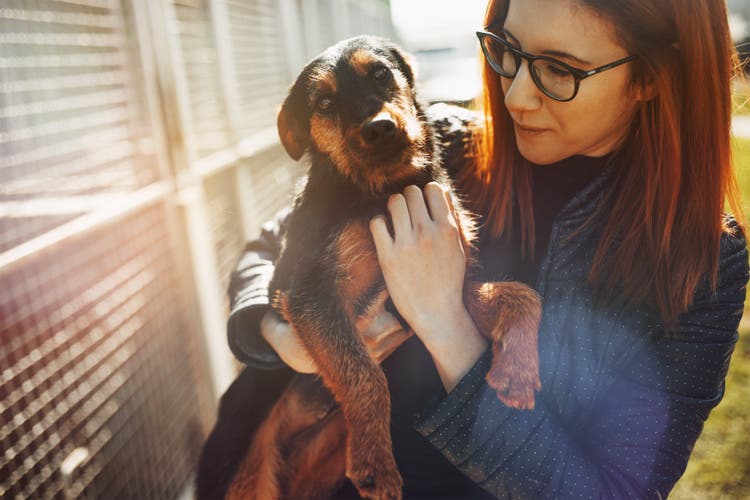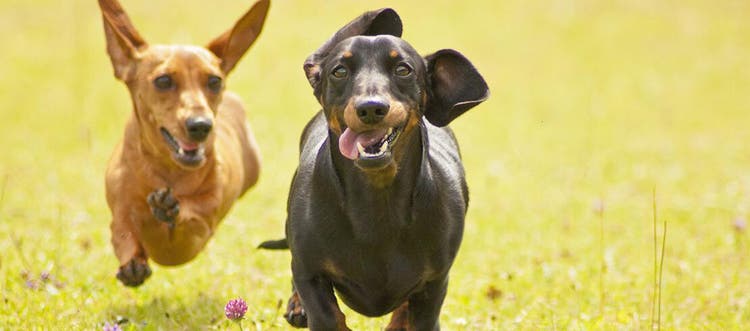A dog’s body language can tell you a lot about how they’re feeling. Here are the signs to look for, and what they might mean.
Dogs use their eyes, ears, tail and other parts of their body to communicate how they feel about people, places and situations. Understanding your dog’s body language is an important part of communicating with them.
This is particularly important if your dog’s behaviour or body language suddenly shifts. Knowing how to read their body language will help you know how to react appropriately.
How to tell if your dog is happy and relaxed
A relaxed dog will not appear tense in any way. These are some indicators:
Mouth:
A relaxed dog’s mouth will be slightly open.
Eyes:
Their eyes will be a normal shape and size, not dilated or showing the whites of the eyes.
Ears:
Their ears will be in their normal position (relaxed, not pointed forward or pulled back).
Tail:
A happy dog’s tail is in a relaxed, neutral or slightly raised position. Their tail may be wagging in a wide, slower-paced pattern.
Contrary to popular belief, a wagging tail is not always a sign of a friendly dog. A wagging tail is a sign that the dog is ready to interact. They could be ready to interact in a friendly or unfriendly manner. It is important to observe the rest of the dog’s body language as well.
How to tell if your dog is upset or nervous
How can you tell if your dog is sad, nervous or anxious? Here is a list of some of the most common signs that dogs exhibit, and what they usually mean:
Body freezing:
A dog may freeze while they assess a situation and decide whether they need to run or fight. It is the sign that they are experiencing a high level of unease. A dog freezing could be a precursor for aggression.
Hunched, or making its body appear smaller:
Dogs show submission by lowering their heads and bodies to lessen the risk of attack from a dominant dog. When a dog lowers themselves close to the ground they can also be cowering and showing signs of fear.
Eyes appear larger than normal:
A dog’s eyes can appear large either when they feel threatened or aggressive. Sometimes dogs exhibit “whale eyes” which is when their eyes are open wide and the white of their eyes are visible. This is because they are averting their heads but keeping their eyes fixated on something or someone. This is a sign of anxiety and discomfort or fear. Dogs that feel backed into a corner may have “whale eye”. It could be a sign that they will snap and is a clear indication that they need more space. A dog who is averting their head is also a sign that the dog does not want to interact or be in that situation.
Squinting:
Dogs that feel unwell can look as though they are squinting their eyes. Squinting can also be a sign of appeasement and submission – or a sign of fear. If a dog is squinting but approaching it is likely showing friendly submission. If, however, the dog is squinting but crouching, this dog is showing signs of fear and should not be approached.
Ears pulled back:
If your dog’s ears are pulled back only slightly, they are probably just being friendly. But if their ears are completely flattened or stuck out to the sides of their head, they are showing indications of being frightened, submissive or defensive.
Yawning:
Yawning can just mean your dog is tired. If a dog is yawning a lot, however, it may also mean they are stressed or nervous, as dogs sometimes yawn to calm down (humans yawn more when they are anxious as well).
Lip licking, tongue flicking, drooling:
Many dogs lick their lips, flick their tongues or drool for other reasons, but if your dog is doing one or more of these actions more frequently or out of character, these could be signs of stress.
Mouth closed:
When a dog’s mouth is closed, this is a sign they are alert and getting ready for action. A tightly closed mouth, however, is a sign of fear or tension. The dog may also pull their lips back at the corners (known as “long lip”).
How to tell if a dog is fearful or aggressive
Try to quickly remove your dog from situations that trigger a fearful or aggressive response. If your dog frequently exhibits signs of aggressive behaviour you should consult your veterinarian or a behavioural specialist.
Ears raised or pricked:
Ears that are stiffly raised or pricked forward usually mean that your dog is alert and ready for action. A dog will direct their ears towards whatever is holding their interest. Ears held high and forward can also be a sign of aggression.
Low tail or tail between the legs:
A tail that’s very low or tucked between a dog’s legs is a sign that the dog is uncomfortable, nervous or fearful.
Fast-wagging tail:
If a dog’s tail is wagging extremely fast with tiny high-speed moments it is a likely a cue of tension or aggression. If the tail is held very high and wagging stiffly this may also indicate dominance. Barking may also accompany this behaviour. These are all signs of a dog on the brink of taking action – either flight or fight. This dog should not be approached.
Standing up tall/making their body appear larger:
This is a sign of a dog being assertive or aggressive – they are literally trying to make themselves seem bigger than the other dog or the person.
Teeth bared or snarling:
Bared teeth or snarling are typically a dog’s way of warning you (or another dog or animal) not to come any closer. Bared teeth, however, could also be a sign of submission, particularly if they are accompanied by a lowered body and head.
Snapping or nipping:
Snapping or nipping by an adult dog is a clear warning to back away and is an indication that the dog feels threatened. (Snapping and nipping are also quite common puppy behaviours especially when they want to play, but you should teach your puppy at an early age that it’s not alright to bite.)
Biting:
Dogs may bite humans for any number of reasons. They could be fearful or startled, territorial or resource-possessive, dominant, in pain or because they feel trapped or cornered. Dogs should always be supervised around children, and children should be taught to respect dogs and their boundaries.
No matter the reason, every dog bite is a cause for serious concern. Consult with your veterinarian or a professional dog trainer to ensure the safety of both you, your dog and others.
Dogs may not talk but they are very effective communicators if you know what to look for. Learning how to read your dog’s language will help you forge a closer bond with your dog and help keep you and your family safer when interacting with other dogs.
Helpful hint: Obedience tricks – such as ‘sit!’ and ‘wait’ – can help make your dog feel comfortable and relaxed in new situations as he is waiting for the owners next command and feels that his owner is in control of the situation.









